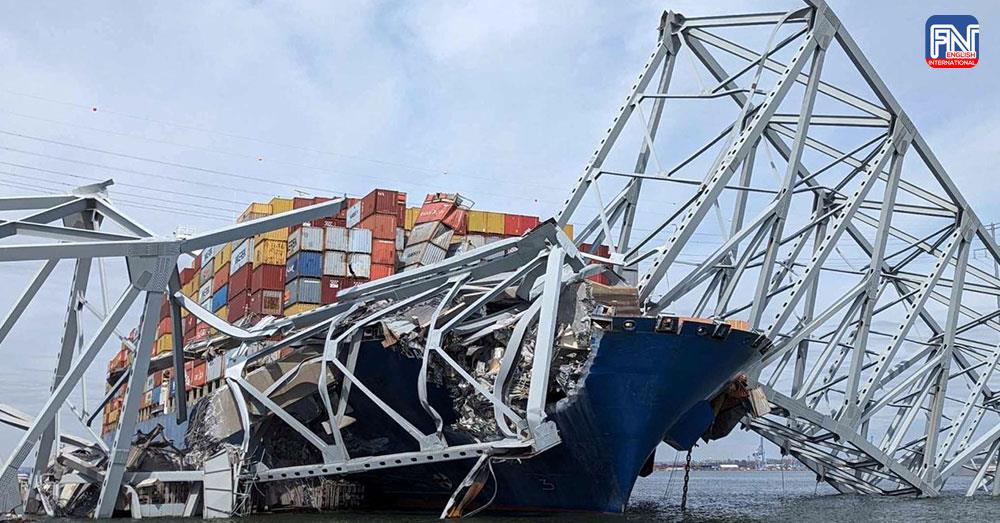BALTIMORE, Mar. 27 (Reuters) - The pilot of the cargo freighter that knocked down a highway bridge into Baltimore Harbor had radioed for tugboat help and reported a power loss minutes earlier, federal safety officials said on Wednesday, citing audio from the ship's "black box" data recorder.
The head of the National Transportation Safety Board also said that Francis Scott Key Bridge, a traffic artery over the harbor built in 1976, lacked structural engineering redundancies common to newer spans, making it more vulnerable to a catastrophic collapse.
New insights into the fatal disaster emerged a day after the massive Singapore-flagged container ship Dali sailing out of Baltimore Harbor bound for Sri Lanka reported losing power and the ability to maneuver before plowing into a support pylon of the bridge.
The impact brought most of the bridge tumbling into the mouth of the Patapsco River almost immediately, blocking shipping lanes and forcing the indefinite closure of the Port of Baltimore, one of the busiest on the U.S. Eastern Seaboard.
Divers on Wednesday recovered the remains of two of the six workers missing since the crumbling bridge tossed them into the water, officials said on Wednesday.
Maryland State Police Colonel Roland Butler said a red pickup truck containing the bodies of the two men was found in about 25 feet (7.62 m) of water near the mid-section of the fallen bridge.
He also said authorities had suspended efforts to retrieve more bodies from the depths due to increasingly treacherous conditions in the wreckage-strewn harbor. Butler said sonar images showed additional submerged vehicles "encased" in sunken bridge debris, making them difficult to reach.
The two men whose bodies were recovered on Wednesday were identified as Alejandro Hernandez Fuentes, 35, of Baltimore, a native of Mexico, and Dorlian Ronial Castillo Cabrera, 26, of nearby Dundalk, originally from Guatemala.
Four more workers who were part of a crew filling potholes on the bridge's road surface remained missing and presumed dead. The six also included immigrants from Honduras and El Salvador, officials said.
Rescuers pulled two workers from the water alive on Tuesday, and one was hospitalized.
The economic fallout could be staggering. The port handles more automobile and farm equipment freight than any other in the country, as well as container freight and bulk goods ranging from sugar to coal.
U.S. Transportation Secretary Pete Buttigieg said the 8,000 jobs are "directly associated" with port operations, which generate $2 million a day in wages.
Still, economists and logistics experts doubted the port closure would trigger a major U.S. supply chain crisis or significant spike in the price of goods, due to ample capacity at rival shipping hubs along the East Coast.
The collapse, which occurred at 1:30 a.m., has created a traffic quagmire as well for Baltimore and the surrounding region.

Photo from Reuters